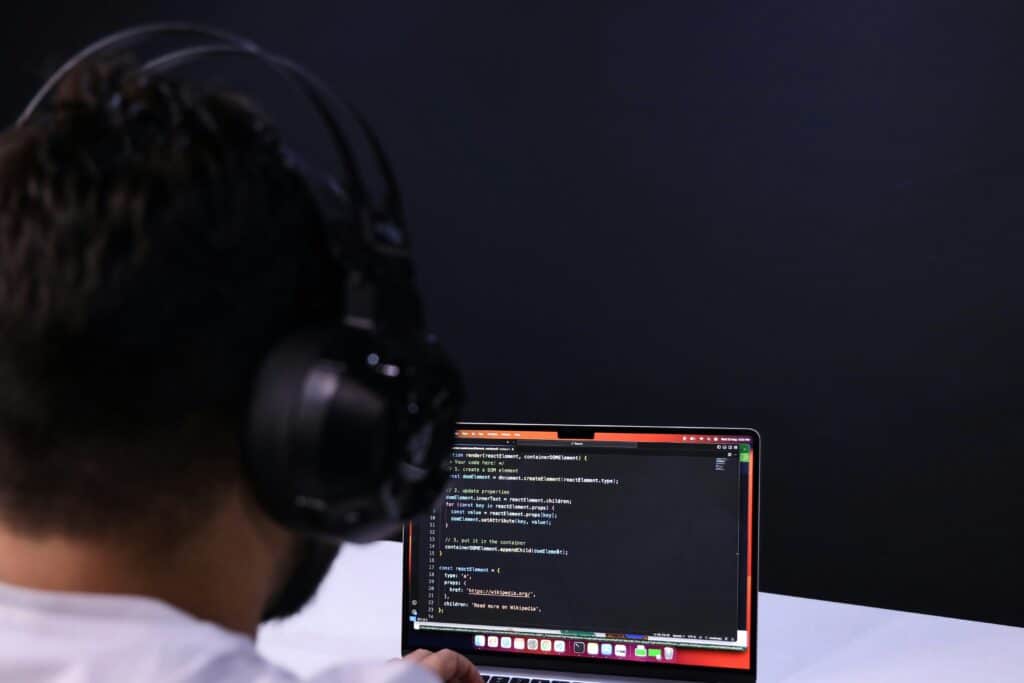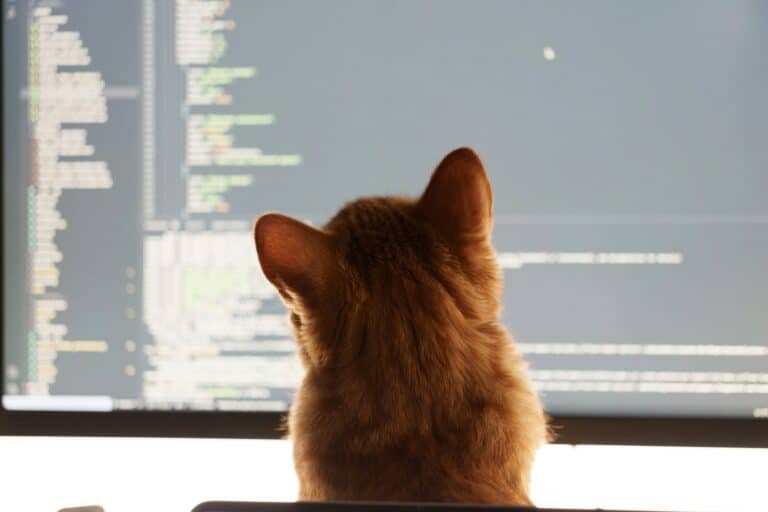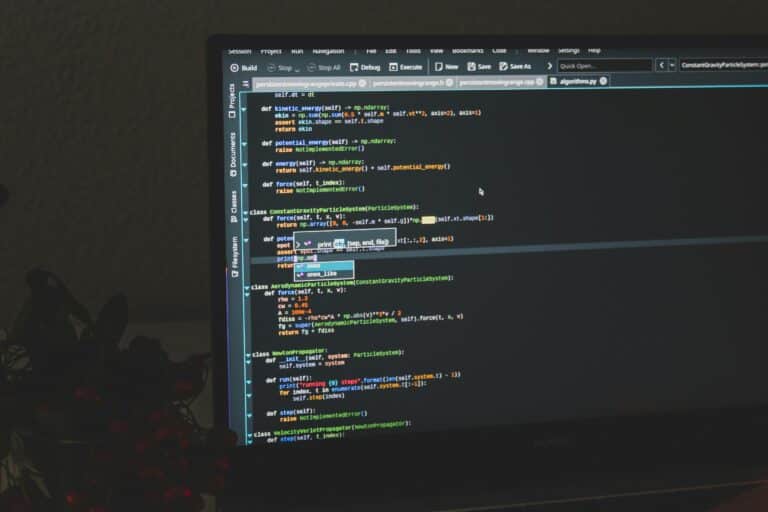In today’s digital world, where information is always at our fingertips, maintaining focus while coding can be a major challenge. This is especially true for freelance developers, who are often responsible for managing their own time and ensuring they stay productive throughout their workday. Distractions are just a click away, and it can be all too easy to lose hours to unproductive activity. But, with the right approach and a carefully crafted checklist, you can successfully navigate the potential pitfalls of distraction and maximize your coding efficiency.

In this comprehensive article, we are going to provide you with a powerful tool – a distraction-free coding checklist designed specifically for freelance developers. This checklist, refined over years of practical experience and technical knowledge, can be a game-changer in the way you approach your coding tasks. 🎯
Before diving into the checklist itself, it’s important to understand the underlying factors that affect our productivity. Distractions come in various forms, and often, they are tied to our environment, habits, and the structure of our tasks. By having a clear understanding of these aspects, we can effectively use our checklist to tackle them.
Our coding checklist not only addresses common distractions but also incorporates strategies to boost your overall productivity. You’ll discover techniques to manage your time effectively, keep your focus sharp, and maintain high-quality code. Whether you’re just starting your freelance journey or you’re a seasoned professional, this checklist is designed to equip you with practical tools to improve your workflow and efficiency.
Here’s a sneak peek into some of the key areas we’ll be exploring:
🧭 Time Management Techniques for Developers
Time is a precious commodity, particularly for freelancers. We’ll be discussing techniques and strategies that help you make the most of your coding hours. From the Pomodoro technique to task prioritization, you’ll learn how to make every second count.
🔍 Eliminating Distractions and Enhancing Focus
We all know how easily distractions can creep in, breaking our concentration and disrupting our productivity. Here, we’ll delve into practical ways to keep distractions at bay, and methods to enhance your focus while coding.
🛠️ Code Quality and Regular Reviews
Productivity isn’t just about getting things done quickly; it’s also about maintaining high-quality work. We’ll provide tips on ensuring your code is top-notch and discuss the importance of regular code reviews.
This article will not only walk you through the checklist but also provide detailed explanations on why each item is essential, and how to implement them into your routine. The goal is not to add more to your plate but to help you work smarter, not harder.
So, are you ready to boost your productivity as a freelance developer? Let’s dive into this ultimate coding checklist and get you on the path to maximum efficiency. Remember, it’s about making gradual changes and refining your process, not overnight transformations. Let’s get started! 🔥
Unlocking Your Productivity Potential: Distraction-Free Coding for Freelance Developers
As a freelance developer, the breadth of your success often hinges on your productivity. In the wake of modern-day distractions, maximizing efficiency becomes a pressing challenge. Here, we unveil a comprehensive, distraction-free coding checklist that can drastically enhance your productivity.
The right combination of techniques, tools, and discipline can not only boost your coding productivity but also improve the quality of your work, reduce stress, and ultimately increase your earning potential. So, let’s dive into this checklist that could very well be the game-changer in your freelance developer career.
We will cover the key areas including your workspace setup, effective time management, efficient coding practices, and essential tools for productivity. So, brace yourselves for an enlightening journey through productivity enhancement.
Workspace Setup: Creating a Productivity-Enhancing Environment
Developing a conducive workspace is the foundation for enhancing productivity. Your workspace should facilitate focus, minimize distractions, and promote comfort.
A well-organized workspace enhances your efficiency and reduces the time spent searching for necessary items. Maintain a clean desk with only the essential tools needed for your work. This includes your computer, notepad for jotting down ideas, and perhaps a cup of your favorite beverage for those long coding hours.
A comfortable chair and desk setup can save you from long-term physical health issues. Ensure your chair and desk are ergonomically designed and your monitor is at the correct height to reduce strain. Also, consider investing in a good pair of headphones to block out noise distractions.
Workspace Setup Comparison
| Aspect | Before | After |
|---|---|---|
| Cleanliness | Cluttered desk with unnecessary items | Clean desk with only essential items |
| Comfort | Non-ergonomic chair and desk | Ergonomic chair and desk |
| Noise | Open space susceptible to noise | Use of noise-cancelling headphones |
Effective Time Management: Organizing Your Day for Maximum Efficiency
Time management is crucial for freelance developers. Without the traditional office structure, you must create your own schedule and stick to it.
Start by setting specific working hours. Just because you can work anytime doesn’t mean you should. Establish a routine that includes breaks and personal time. Utilize tools like Google Calendar or Microsoft Outlook to schedule your day and set reminders.
Prioritize your tasks based on their urgency and importance. This is where the Eisenhower Matrix can come in handy. This matrix allows you to categorize tasks into four quadrants based on their urgency and importance, helping you decide whether to do it now, schedule it for later, delegate it, or not do it at all.
The Eisenhower Matrix
| Urgent | Not Urgent | |
|---|---|---|
| Important | Do it now | Schedule for later |
| Not Important | Delegate | Don’t do it |
Efficient Coding Practices: Optimizing Your Coding Process
Coding practices can significantly impact your productivity. Optimize your coding process by using code snippets, learning keyboard shortcuts, and practicing touch typing.
Code snippets are reusable pieces of code that can save you time and reduce redundancy. Keyboard shortcuts can save you time by reducing the need for mouse clicks. Touch typing, where you type without looking at the keyboard, can significantly increase your typing speed.
Also, consider adopting Test-Driven Development (TDD). This approach, where you write tests before writing the actual code, ensures code correctness and reduces debugging time. For a comprehensive understanding of TDD, watch this insightful video: “Test-Driven Development: Write Better Code in Less Time” by Edureka!
Code Snippets vs. Traditional Coding
| Aspect | Traditional Coding | Code Snippets |
|---|---|---|
| Efficiency | Time-consuming, prone to redundancy | Time-saving, reduces redundancy |
| Quality | Prone to errors | Proven and tested code |
Essential Tools for Productivity: Harnessing the Power of Technology
Finally, leverage technology to boost your productivity. Productivity tools can help with time tracking, project management, communication, and much more.
Time tracking tools like Toggl or RescueTime can provide insights into your productivity patterns and help identify areas for improvement. Project management tools like Trello or Asana can help you stay organized and manage your projects effectively. Communication tools like Slack or Microsoft Teams can streamline your communication with clients and team members.
Also, consider using distraction-blocking tools like Freedom or StayFocusd to keep you focused on your work. Now, let’s see a comparative view of these productivity tools.
Productivity Tools Comparison
| Tool | Use Case |
|---|---|
| Toggl | Time tracking |
| Asana | Project management |
| Slack | Communication |
| StayFocusd | Distraction blocking |
Remember, productivity is a journey, not a destination. Constantly seek ways to improve and refine your productivity strategies. Happy coding! 🚀
Conclusion
In conclusion, we have dived deep into the technicalities of software engineering, its vast potential, and the role it plays in the current digital age. We have seen how software engineering has advanced over the years, becoming a fundamental part of not just the technology industry but also shaping our everyday lives.
Starting from the basics, we emphasized the importance of software engineering principles and their applications, underlining how they act as a backbone in designing and developing robust software systems. We further explored the intricacies of software development methodologies like Agile, Waterfall, and DevOps, which provide structured frameworks for software teams to build quality products within specified time and budget constraints. 💻👨💻
We also touched upon the fascinating world of artificial intelligence and machine learning, and how they are revolutionizing the software landscape. AI and ML, with their capabilities of mimicking human intelligence and learning from data, have opened up new vistas of opportunities and challenges in software engineering. 🤖🧠
Furthermore, we discussed the critical aspects of cybersecurity, emphasizing how the security of software systems is paramount in this age of data breaches and cyber threats. We highlighted the need for integrating security measures right from the early stages of software development, stressing the importance of the ‘security by design’ approach. 🔒🛡️
This article has been designed to be a comprehensive guide for both novices and experts in software engineering. However, we have barely scratched the surface. The realm of software engineering is vast and continually evolving. It demands continuous learning, curiosity, and adaptation. With the pace at which technology is advancing, it’s crucial to stay updated with the latest trends, techniques, and tools.
I hope this article has ignited your curiosity and deepened your understanding of software engineering. My aim has been to unravel the complexity of this subject and make it more accessible. I encourage you to delve deeper, explore more, and continue your learning journey in software engineering. Remember, every great software was once just an idea in someone’s mind. With the right skills and mindset, you too can turn your ideas into reality. 🚀🌐
Feel free to comment with your thoughts, questions, or experiences related to software engineering. Sharing our knowledge and experiences enriches the community as a whole. Also, consider sharing this article with anyone who might find it useful.
For further reading, I would recommend the following sources:
– Principles of Software Engineering (INSERT LINK)
– A Comprehensive Guide to Agile Software Development (INSERT LINK)
– The Basics of DevOps (INSERT LINK)
– Understanding Machine Learning (INSERT LINK)
– Cybersecurity in Software Engineering (INSERT LINK)
Stay curious. Keep learning. Keep innovating. Until next time, happy coding! 👩💻👨💻👏
References:
1. Source 1 (INSERT LINK)
2. Source 2 (INSERT LINK)
3. Source 3 (INSERT LINK)
4. Source 4 (INSERT LINK)
5. Source 5 (INSERT LINK)



